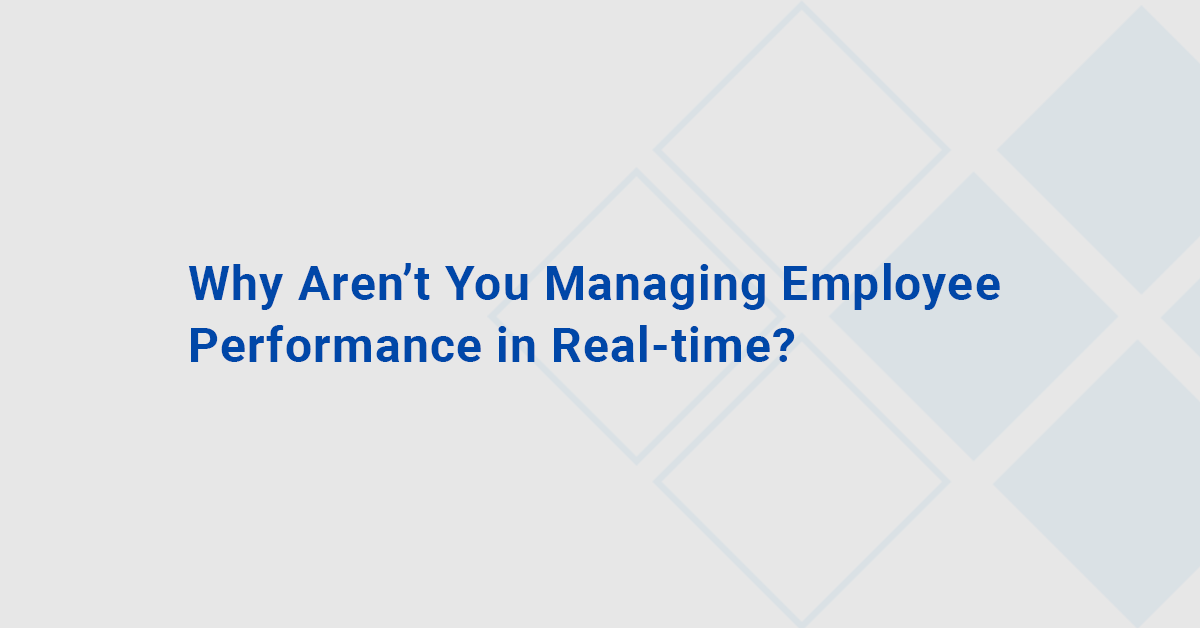Executive summary:
- Data analytics makes decision-making 5x faster
- Real-time data helps address performance gaps quickly, increase productivity
- An LMS utilizing real-time BI tools makes data digestible and actionable
To succeed in today’s challenging supply chain environment, organizations need to manage to the highest level of performance. To do this, they need timely, accurate data that enables them to make fast, informed decisions.
But as the supply chain becomes more fast-paced and complex, and the volume of data available grows, the “old school” approach of manually running reports and then sifting through them to get the needed information is no longer adequate. Modern labor management software can not only provide real-time performance data for warehouse employees but make it easily understood and actionable.
[CHOOSE THE RIGHT LABOR MANAGEMENT PARTNER FOR YOUR BUSINESS]
The Need for Real-Time Performance Data
Business has become increasingly data-driven – and it’s no surprise. Data analytics makes decision-making 5x faster, and a BARC survey found that companies using big data saw an 8% increase in profit and a 10% reduction in cost.
While nearly everyone recognizes the benefits of utilizing data, their ability to realize those benefits often comes down to their approach. A Harvard Business Review report found that 87% of executives surveyed said their organizations will be more successful when frontline workers have access to data and tools to help them make decisions in the moment.
For some organizations, a hurdle to effectively utilizing data within their operations is the reliance on manual processes. A report by Plutoshift found that 48% of companies use spreadsheets or other manual data entry documents. And, as a result, only 12% are able to take action on their data insights automatically.
Manually pulling data and running reports is difficult and time-consuming, and by the time the reports are available, the information may be old and no longer actionable. Not only does this hinder an organization’s ability to make adjustments throughout the day but may cause them to operate with incomplete or inaccurate information.
To operate at the highest levels of performance, organizations must evolve from managing employee performance manually to using real-time data.
Using an LMS to Manage Performance in Real-Time
A labor management system (LMS) utilizing real-time business intelligence (BI) tools provides organizations with the data and insights they need to manage employee performance at a high level. Having BI tools embedded in your LMS will enable you to analyze all the data you’re collecting in your warehouse and turn those insights into action. These systems can seamlessly integrate with any WMS or other systems to provide greater visibility and data aggregation from across your operations.
Using real-time performance metrics allows organizations to manage their workforce in several key ways:
- Quickly identify and address performance gaps
Real-time performance data and alerting within an LMS make it easy to spot bottlenecks or unexpected lost time, determine the root cause, and correct it quickly. Supervisors get a current and accurate view of individual employees or their entire operation, and can quickly use those insights to drive continuous improvement and boost performance, day by day.
- Better employee engagement
With access to real-time performance data, supervisors can immediately provide accurate and detailed feedback to associates. Metrics can help guide coaching efforts by ensuring workers know where they stand compared to expectations and where they need to improve. Consistent, data-supported engagement between managers and associates creates a positive environment, resulting in higher employee morale and retention. Performance data can also be shared with associates to foster a healthy competitive environment and boost productivity.
- Increased worker productivity
Addressing performance gaps in real-time – whether due to a process breakdown or poor time management – can help ensure employees are performing at a high level and not having to wait to address any issues. Utilizing an LMS with BI reporting tools also eliminates the need to manually pull reports and analyze data, allowing supervisors to spend more time on the floor managing their teams.
- Greater visibility into performance and time management
Understanding how employees spend their time helps organizations identify non-productive time and better pursue improvement opportunities. And when you start to manage to performance, employees become better at tracking their time, including indirect hours or delay hours. As organizations get greater visibility into those off-standard hours and how time is being spent, they can better tackle employee utilization.
Making Data Actionable
Long gone are the days of simply running a slew of reports and then trying to figure out what to do. A tier-1 LMS will help formalize the workflows around the activities that go into managing a team’s performance. A good LMS goes way beyond basic performance calculations and reporting and can aggregate complex data from multiple systems and make it digestible and actionable.
Labor management technology presents the opportunity to better plan and manage your operation in real-time. For more insight, schedule a ProTrack LMS Demo or Free Operational Labor Audit.
Author: Andy Paulson, Senior Director, Sales and Customer Success
Related TZA Resources:
- PROTRACK LABOR MANAGEMENT SOFTWARE OVERVIEW
- ESSENTIAL COMPONENTS FOR A HIGH-PERFORMANCE WORKFORCE
- CHOOSING THE RIGHT LABOR MANAGEMENT PARTNER FOR YOUR BUSINESS


